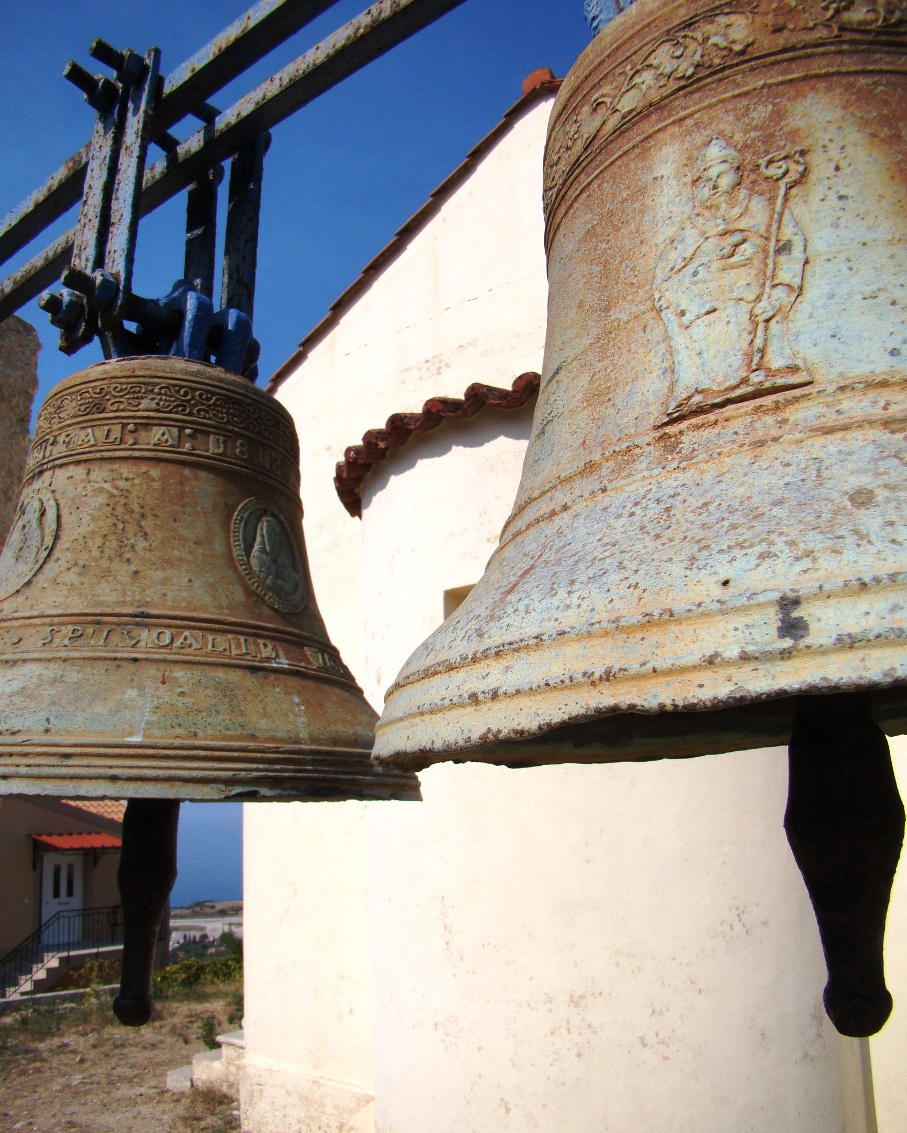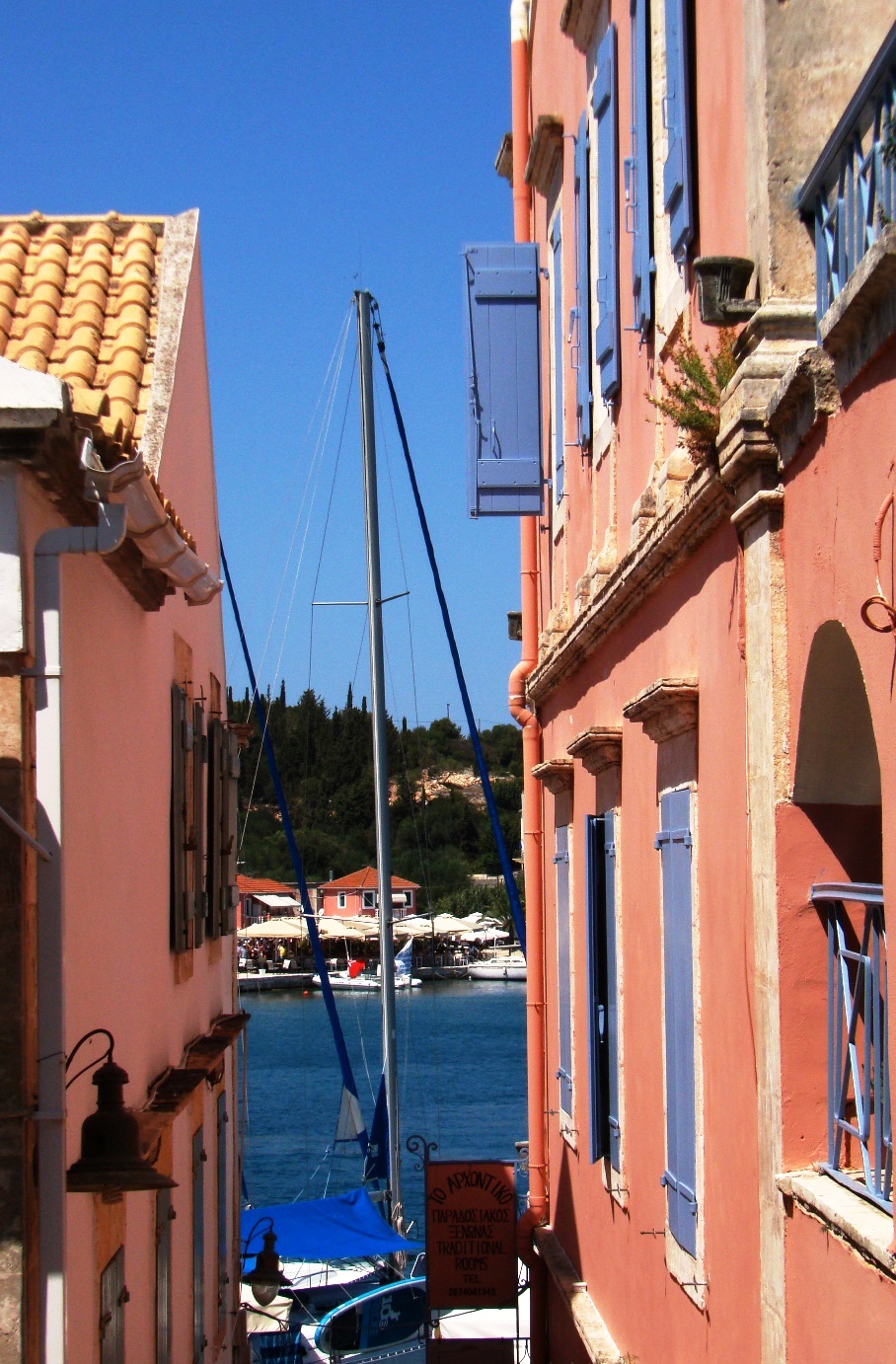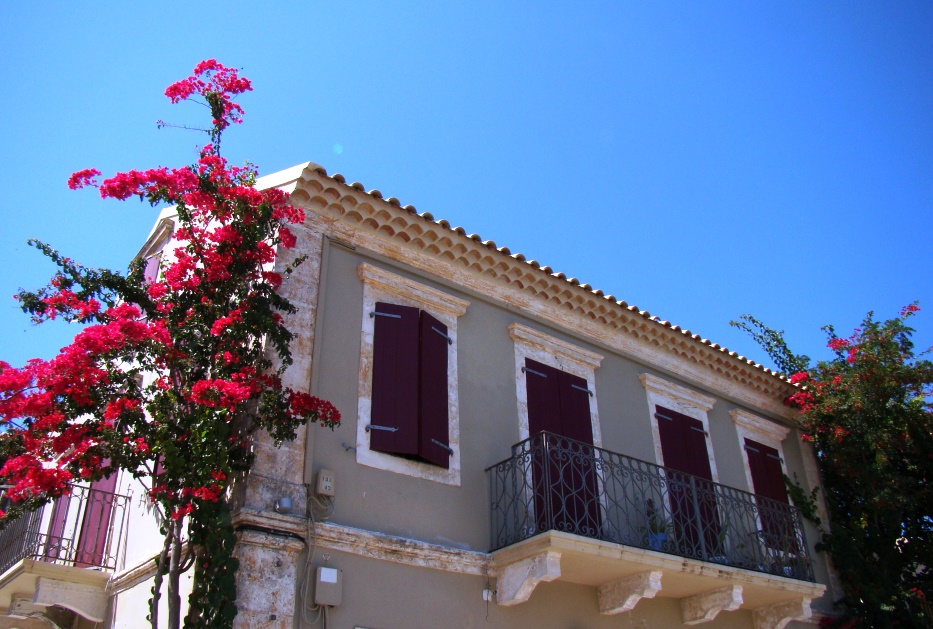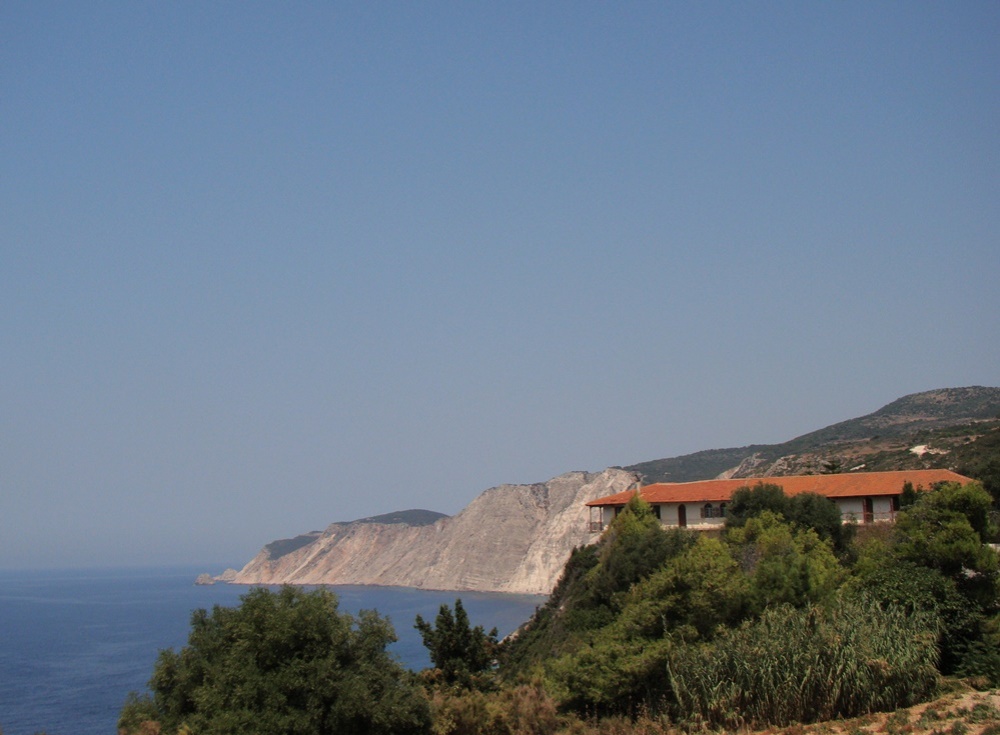![]() Sea water falls beneath the ground, travels a long distance underneath your feet only to reveal its crystal nature in secret caves, revolve windmills and set the scene for the mystique of rawing with mythological divine spirits. Illuminating shades of green intermixed with the vibrant palette of a land in perpetual change; welcome to Kefalonia (or Cephalonia)!
Sea water falls beneath the ground, travels a long distance underneath your feet only to reveal its crystal nature in secret caves, revolve windmills and set the scene for the mystique of rawing with mythological divine spirits. Illuminating shades of green intermixed with the vibrant palette of a land in perpetual change; welcome to Kefalonia (or Cephalonia)!

History is appointed island’s painter; nature is designated as the most responsible gatekeeper of underwater streams, overground diversity, green highlands, high-flying supervisors and flicking movements. Above all, the highest mountain in the Ionian Sea puts the equilibrium point in a way that dense forests, long beaches, large towns and small villages are harmonically developed all around. The land of Kefalonia lies on the sea but Mount Ainos issues the order to raise itself up to the sky.

Prepared to cover long distances on the island on Kefalonia by car, we arrived at the port of Poros. The green identity comes out of the blue.

What is not usually read in travel guides about Kefalonia is that the vast array of rocks, colours, different beaches and every small interaction with its flora and fauna make you remember and forget, travel and restart all over again, at every turn.


National Park of Mt. Ainos, standing at a height of 1,628 m., is uniquely embellished with the Kefalonian Fir forest. Designated as a European Biogenetic Reserve, it belongs to the “Natura 2000” European Ecological Network of Protected Areas (more than 400 plant species and 100 bird species).

A dish of traditional “riganada” with rusk, fresh tomato, picante Feta cheese of Kefalonia and Mediterranean herbs stuffed with warm smiles was one of the most authentic welcomes made of natural wood in bioclimatic design at the “Driftwood Eco-Villa”.

Located in Karavados, close to the beach of St. Thomas with a view to Zakynthos island to the south, this brand new villa is evidently influenced by Dennis’ and Maria’s eco-friendly mindset.

Here, the water ‘is boiling energy’ along the coastline. Bubbles come out from the seabed in St.Thomas, as long as you dive from the springboard.


It is also here, where the slopes of Mt. Ainos plummet into the sea, hosting a great variety of beaches at its foot. Remnants of anterior sea life are easily spotted on the rocks; sea shells were fossilized many years ago and now constitute the exterior déco of the seashore.

In sight of these ancient creatures, we discussed with Dennis at the house; he explained that fossils are still embedded in the rocks found up on Ainos mountain; some of them are carefully processed and used for decoration, interior design etc. The floor of the villa is a representative sample and brings the earliest forms of complex life to the forefront.

Maria had already set the table and prepared for us a cold mountain tea with Greek herbs, while Dennis guided us through the garden area around the private pool. The instant crop of figs from the trees of the estate further sweetened our long discussions.


Yearning for authentic hospitality stories was satisfied with the outdoor BBQ under the olive trees and the pool float in full privacy. A collection of moments to set up the vacation platform for the next few days.


Follow the route to Lakithra village to discover the rock of Byron. A hospitable old man wandering around the neighbourhood offered to give us directions to the characteristic “portoni” of a small church on the hill; it was the best way to understand that different types of entrance possess their own names e.g. the word “portoni” (“porta” is the Greek word for door), describes the entrance not placed on the façade of the main residence.

An inscribed marble with the words of Lord Byron stands at the place where he used to sit and write some of his most famous poems, inspired by the stunning infinity: “the poet that I became, I owe it to the air of Greece”.

Further to Karavados and Lakithra, the wider area of Livatho also hosts Kourkoumelata, a picture-perfect village with old-world charm. Low-profile but highly-esteemed by sophisticated voyagers, the village was rebuilt after the disastrous earthquake of 1953, thanks to financial support of Vergotis’ family, maintaining neoclassical architectural tendencies and street layouts with many Swiss influences.
1953 has been a significant milestone in the history of Kefalonia. The earthquake changed many aspects of Kefalonian life thereafter, largely modifying its sociocultural profile.

Apart from Fiskardo (north) and only few other spots of the island, lucky enough to preserve their architectural identity, samples of the old Kefalonian architecture cannot be easily found today. Only two buildings in the town of Argostoli narrate the stories of the past.

The reputable Gentillini’s mansion was bought in 1872 and refurbished by the well-known neoclassical architect Ernest Ziller, with great commissions by the Athenian bourgeoisie. Moments of political grandeur maximised the impact of the building on the history of Argostoli. Although now missing the upper floor, the house still extrapolates the energy of an era long gone.

The bridge of Dembosseti (paraphrasis of the name of its visionary founder Charles-Philippe de Bosset) also withstood the 1953 earthquake. First built from wood (1812), the project was accomplished within 15 days; when they first faced the bridge spanning 900 m., villagers could not believe their eyes. Circumferential roads and time-consuming boat rides to cross Koutavos lagoon were forever gone.

The northern peninsula of Argostoli has now been transformed into a charming rest area for afternoon and night outs. The preview of Agioi Theodoroi lighthouse is just the beginning. A closer look at the daylight will reveal the artistic aspirations on 24 Dorian capitals surrounding the lighthouse attendant residence. Today’s view owes its beauty to the structure rebuilding, after the devastation of 1953.

The first watermill in Kefalonia was built where the sea crumbles down to underground ravines. This eerie phenomenon has been scientifically explained and gives way to underground water streams, which cross the land of Kefalonia from west (Katavothres, close to Argostoli) to east (Sami – Karavomylos).

On their way to Karavomylos, underwater streams find an exit to Melissani, the legendary cave of the Nymphs, 2km from the town of Sami. You only have to embark on traditional boats to paddle in narrow waterways around a small island and amid 20,000 year-old stalactites. The joy of sunlight reflected on the surface, permeats the lake, in an attempt to reach the depth of 39m.


Since diving is not permitted in the cave, Antisamos beach is calling you. Blue green and green blue fade-outs play the game of daylight colours on the pebble beach. “Bella bambina at two o’clock!”; this is exactly the place where you almost hear in the air one of the most famous quotes from the film of Captain Corelli’s Mandolin, based on the same novel written by Louis de Bernières.

The strait between Kefalonia and Ithaca absorbs the lightness of the travel itinerary as the route goes uphill. The fish village of Agia Efimia rests on the eastern edge of the valley that separates the very north (Erissos) from the south of the island.

The salty layover before the acquaintance with Fiskardo (northernmost peninsula) is Emplisi beach. The small beach sends its ever-green greetings to the island of Lefkada straight away.


Fiskardo is largely considered as a showcase of the remnants of Kefalonian architecture. But the cozy gulf hosts a number of sailing boats and daily visitors from nearby islands, making the portside walk a suffocating experience at noon. Try to be lost in the streets behind the front-end of the village; this might be the only way to see the tiny world of Fiskardo through your lens. Walk away with a meat pie from the traditional “Tselenti’s bakery” (since 1925) and continue to your next stop.




The wallpaper of the island’s favourite fjord has now been formulated; Assos village on the west provides safe anchorage for boats and yachts, some restaurants by the sea, crystal clear shallow waters on a green backdrop and the summer slump in its integrity. Look up to the fortress to safeguard the unpretentious moments of comfy lifetime.


The credits for the multi-awarded and internationally renowned beach of Myrtos go to its background and the very horizon in the fifty shades of blue. Miracles of mechanics made the dream for a bridge above come true. Parapente identified over and above, swimming continued beneath the surface and photo-clicks never end.

Lixouri could be Argostoli’s alter ego, but the dispute between them regarding the proclamation of the establishment of the capital of Kefalonia is a long-lasting story inversely correlated to the short ferry distance between the two cities. Both the symbolism of this story and the geomorphology across the gulf shape the imaginary perception of travelling to an island within the island.

Ready for disembarkation to set foot on Paliki peninsula, the hotbed of intellect itineraries. The west-side stories of Kefalonia offer you the chance to be lost in the gardens of endless horizons, starting from the crowded beaches of Lepeda and Xi to the famous cliff-side beach of Petani.



In the area of Kipouria (southwest), named after the old beautiful gardens (“kipoi” = gardens in Greek), the monks used to plant with the aid of rich water resources. Hanging on the rim of a majestic rock (southwest), the Holy Monastery of Kipoureon sets the meeting with your God. Today the Monastery is closed, but the feeling of self-rediscovery rests the same.

Mirror yourself on the waters of Agia Eleni and make the impossible possible. En route to the beach, as the road grade steepens, the “wow”-factor magnifies your senses, in sight of nature’s creativity.


The small port of Atheras is very generous to its guests. It awaits travellers with open arms and seals the pictures of a serene summer in the land of neverbelieve.


Catamarans just entered the physical port, calm families of the summer enjoy the last daylight and the seaside tavern “Drosos – Porto Atheras” serves fish of the day, meat from their farm and local tastes carefully prepared to match taste sensations with the imposing atmospherics.

Other than the Feta Cheese of Kefalonia, local tables are also proud of the white wine grape variety of Robola. Its high acid character with a distinct lemon note can also be found in bio version, not to miss, from the Robola Cooperative of Kefalonia in Omala valley. The island’s viticulture is really rich; the best way to learn about is to follow expert wine guides; they will show you the way amid vineyards and wineries to taste unique Kefalonian wines.

But Kefalonia is much more than these; horse riding stables in gentle scenery, naturist day cruises to enjoy the freedom of wearing nothing but a smile, coaststeering, jeep safari, zipline, caving, kanyoning accompanied by travel experts.

There are places you will always remember because of their fruity flavour and the intensity of their colour like the ones that encircle the plateaux of Ainos, stretching out to the seashore.
These straightforward travel-why, travel-where and travel-when points in time save the files of insular simplicity on the local disk of the summers you can never forget.

